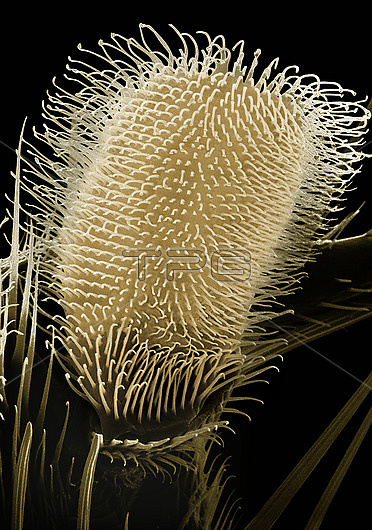
Scanning electron micrograph of the foot of a house fly, Musca domestica. The picture shows one of the two pads - the pulvilli - on the foot of M. domestica. Each pad is covered with hundreds of fine hairs, the setae. These enable the insect to attach itself to a wide range of surfaces, including those which appear completely smooth, such as glass. Each seta is hollow and flexible enough to be able to make contact with surface features. In order to hold the insect to the surface, the setae secrete an adhesive fluid. This enables the insect to walk on vertical smooth surfaces, or even, upside down. The adhesion is sufficient to support the weight of the fly, but is easily released by twisting or pulling, with the assistance of two muscular claws on the foot (not shown here). This combination of strong adhesion and easy release is of interest in the field of robotics. Mag x 520 at 10x7
| px | px | dpi | = | cm | x | cm | = | MB |
Details
Creative#:
TOP26387010
Source:
達志影像
Authorization Type:
RM
Release Information:
須由TPG 完整授權
Model Release:
N/A
Property Release:
N/A
Right to Privacy:
No
Same folder images:

 Loading
Loading